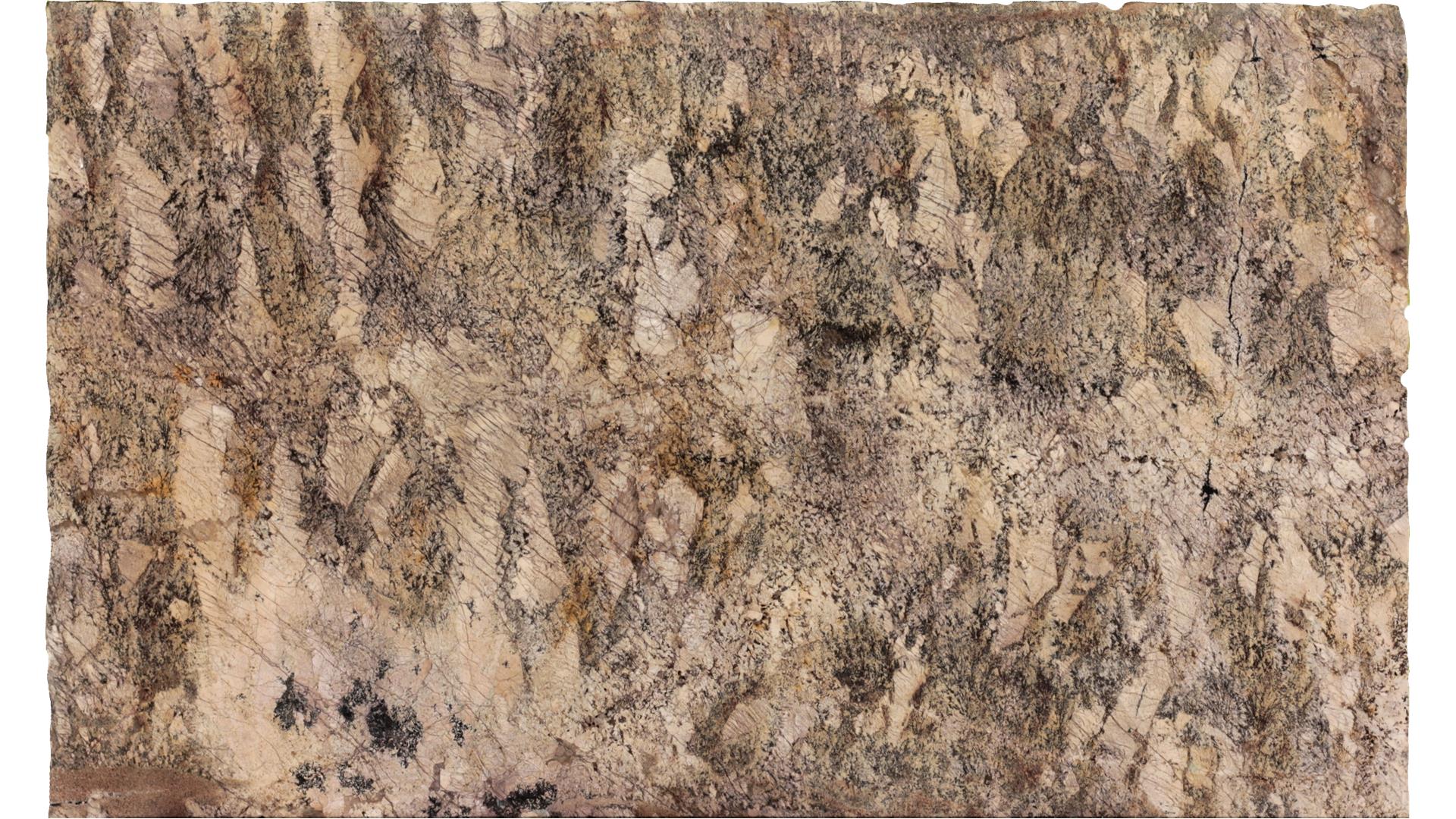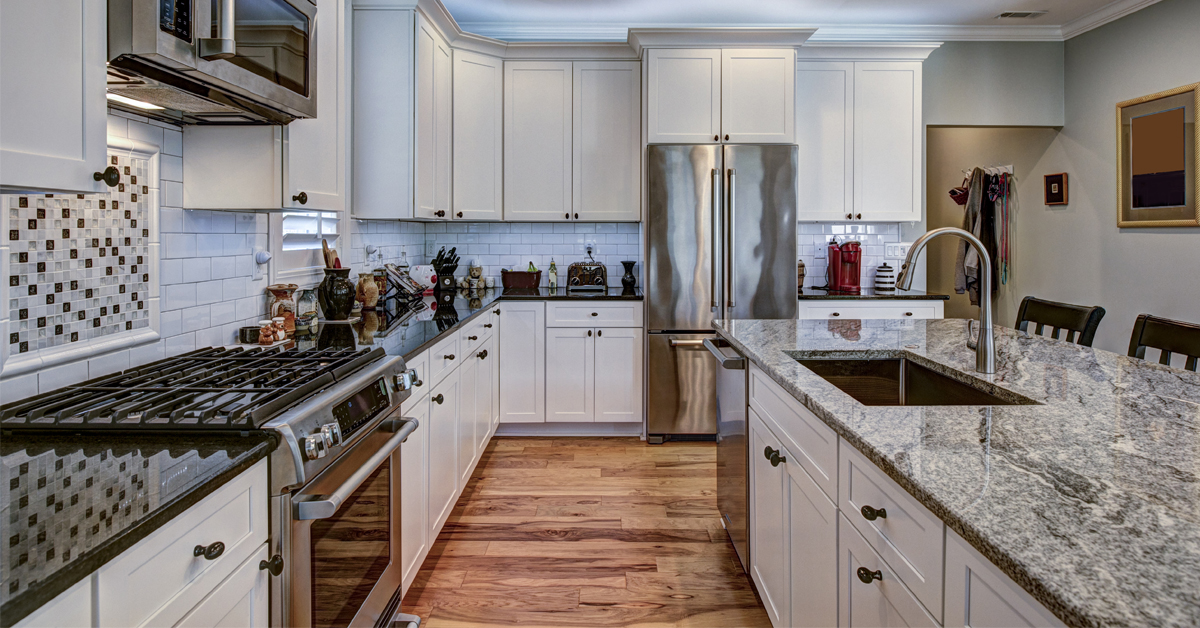All About Granite: Fun Facts About Your Favorite Countertop Material [With Pictures]
Granite is among one of the most popular countertop materials because of its durability, natural beauty and timeless elegance.

We have previously highlighted fun facts about granite and quartz—two enduring popular choices for countertops. In this guide, we will take a deep dive into everything you need to know about granite, myths and fun facts:
TABLE OF CONTENTS
- What is granite?
- Granite countertop maintenance
- Granite pricing
- Common granite myths
- Fun facts about granite
What is Granite?
Granite is an igneous rock consisting mainly of quartz, mica and feldspar. It is extremely durable, as it is not easily chipped or damaged by heat.

Hundreds of colors can be found naturally, which makes granite a perfect design element to homes or businesses. Granite adds to the overall value of a home because it is so easy to maintain and has a distinctive, high-quality look.
Granite Countertop Maintenance
Granite is a relatively easy material to maintain due to its durability. But there are some things you should do to preserve granite’s longevity.

Seal Granite Countertops
As good maintenance, countertop owners should periodically apply a sealant to prevent cooking oil, red wine, grease or other spills from soaking into granite over time and leaving stains. You can purchase sealant and apply it yourself or have a countertop supplier do it for you.
You may need to apply sealant every few months, yearly, or even longer depending on factors such as:
- How often or in what capacity you use your countertops
- How light or dark the granite is
- What you use to clean them
- The type of sealant you use
Usually, the supplier seals new countertops after the fabrication process. Some countertop suppliers will include a basic sealant application after they finish the initial installation. If you’re unsure if you have sealed countertops, be sure to ask.
Easy Daily Cleaning
If your granite countertops have been sealed, daily cleaning is easy. For daily wipe-downs, you really only need warm water, mild dish soap and a washcloth. Microfiber cloths are more hygienic than typical washcloths and are great for cleaning countertop surfaces. Avoid Windex, acidic cleaners like vinegar or lemon/lime juice, and products containing ammonia or bleach. Over-applications of these solutions will weaken your countertops’ sealant over time.
A well-sealed granite countertop is resistant to microorganisms, so hot water and dish soap are generally sufficient for daily sanitizing. If you want to sanitize more, feel free to use a bottle of 70% isopropyl alcohol. Spray it evenly over the granite, allow it to sit for three to five minutes, then rinse with water and dry the surface with a clean cloth.
Granite Pricing
Natural stones like granite come in a wide variety of colors, which also means pricing varies. While it is true that there are various grades of granite available in the marketplace, many countertop suppliers will only carry “A” grade stones. Quality is equal at different pricing levels. So, why the different pricing levels?

Color Supply & Demand
Popular trends and market supply and demand impact pricing. If everyone wants a certain color, the price is going to increase because there is only so much of that particular color available in nature.
The color of granite depends on the ratio of various minerals within the slab. For example, if the granite has a high ratio of quartz and amphibole, it will have a distinctive speckled black and white appearance. Granite with large quantities of potassium feldspar will look pink, while large quantities of amphiboles make it look green.
Some colors are rarer, while others are more abundantly found in the Earth’s crust. Colors that are more common in nature tend to be more cost-effective. For this reason, many darker slabs with consistent patterns are usually the most budget-friendly option.
Color Location
If a granite color is mined from a remote or distant area, there will likely be higher transport costs. These costs would reflect in the final price per square foot.
Slab Veining
The type of veining and amount of variation plays a huge part in granite’s final look. Generally, more veining and variation merits a higher price. On the other hand, colors with simple patterning tend to be more available (with a few exceptions), and therefore less expensive.

Amelia Ridge Granite

Luna Pearl Granite

Hawaiian Bordeaux Granite
Common Granite Countertop Myths
Over the years some facts about granite have become misconstrued. Let’s set the record straight.

Myth #1: Granite is out, quartz is in
Truth: Mother nature is always in style! Both quartz and granite have their own advantages and unique aesthetics and can beautifully complement your home. Just be sure to assess the particular needs of the room your countertops will occupy in order to make the best-fitting choice.
Myth #2: Granite and marble are the same
Since they are both natural stone, you might have heard that granite and marble are almost interchangeable. But the two materials are actually very different.
Truth: Since marble is a softer material than granite, it requires more care to maintain its original luster and surface quality and can acquire a worn look or patina over time in heavy use areas.
Myth #3: Granite countertops are high maintenance
Truth: Granite is stain, scratch, heat and chemical resistant. It’s among the hardest countertop materials available and therefore not easily damaged. Sealants are applied to natural stone like granite to provide additional protection against staining.
Myth #4: Granite is unsafe for food prep
Truth: Granite countertops are generally less porous than other types of natural stone (and usually sealed), so they are resistant to bacterial growth and easy to keep clean.
Myth #5: Granite countertops emit radon
Truth: It’s true that granite may contain naturally occurring radioactive elements like radium, uranium and thorium … but so do other rocks. These are just the resulting byproducts of the natural breakdown of stone and rock. Since granite isn’t very porous and is typically used in well-ventilated areas like kitchens or bathrooms, any radon it contains isn’t likely to escape in quantities large enough to cause problems.
Fun Facts About Granite
We covered facts you should know about granite when making a purchase decision. Now, here are some fun facts about granite you might not know!
Fact #1: Granite is a naturally occurring rock.
Unlike other man-made surfaces (like quartz countertops), granite is naturally formed in the earth’s crust from the cooling of lava composed of quartz, feldspar, mica and various other minerals. Large blocks of this stone are blasted out of mountainsides and sliced into the slabs that we are familiar with at our favorite stone yards. The exact mix of minerals is what determines the color and pattern of your granite countertops.
Also, granite is believed to have been formed 300 million years ago – the oldest igneous rock in the world.
Fact #2. Granite is one of the hardest materials in the world.
Granite ranks between 6 and 7 on the Mohs scale, which is used to measure hardness. The scale ranks minerals from 1 to 10, 1 being the softest and 10 being the hardest. (For perspective, diamond ranks at a 10).
Fact #3: Granite was used in famous structures.
Granite has been used to build some of the most famous monuments and memorials in the world. The natural stone has been utilized as a building material since the time of Ancient Egyptians. Some examples of structures built from granite include Mount Rushmore and the base of the Statue of Liberty.
Fact #4: Granite countertops can add value to your home.
Granite is a highly desirable material in the home. Because of this, the natural stone can add value to your home – something that is helpful if you ever decide to sell. In fact, homes with granite surfaces generally command higher sale prices on the open market than comparable homes in the same area without this desirable feature.
Fact #5: Granite is often used for indoor rock-climbing walls.
Rock climbing is a fun way to get a great full-body workout, but it’s not something that can be done year-round. Fortunately, indoor rock-climbing gyms provide climbers with space to practice. The rock walls in these gyms are often made of granite, chosen for its durability and safety.
Fact #6. Granite was responsible for one of the first commercial railroads in the U.S.
Granite’s value as a decorative and construction material is so high that it caused the creation of America’s first commercial railroad in 1825. The Granite Railway connected Quincy, Massachusetts, and a dock on the Neponset River. From there, boats carried the stone to Charlestown where it was used to build the Bunker Hill Monument obelisk.
Fact #7. No two slabs of granite are the same.
Talk about feeling special! The specks, veining pattern and color of every granite are unique. In other words, no two granite stones are exactly alike.

CONCLUSION
Granite countertops make elegant, timeless and durable additions to any home. Now that we’ve addressed everything there is to know about granite, we hope you feel more informed in your countertop decisions.
Ready to start your journey to beautiful granite countertops in your home? Request a countertop quote through Eastern Surfaces, your Lehigh Valley granite countertop supplier, today!






